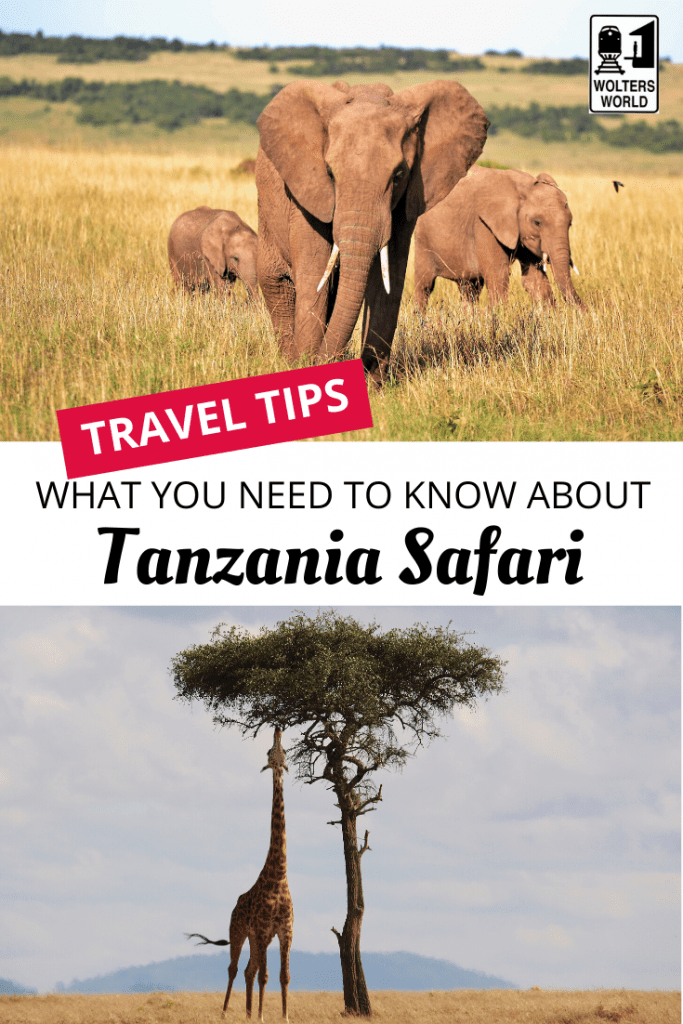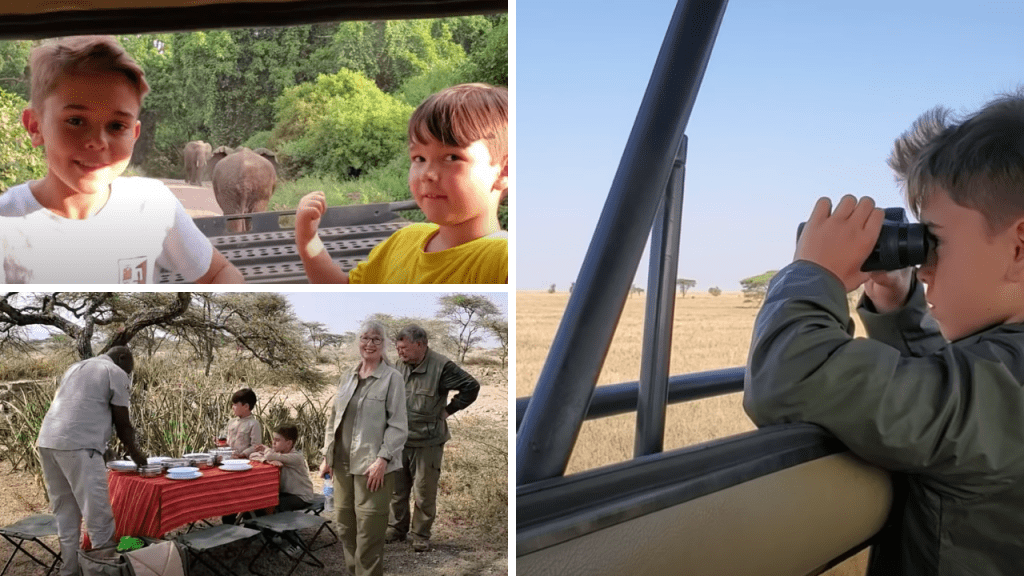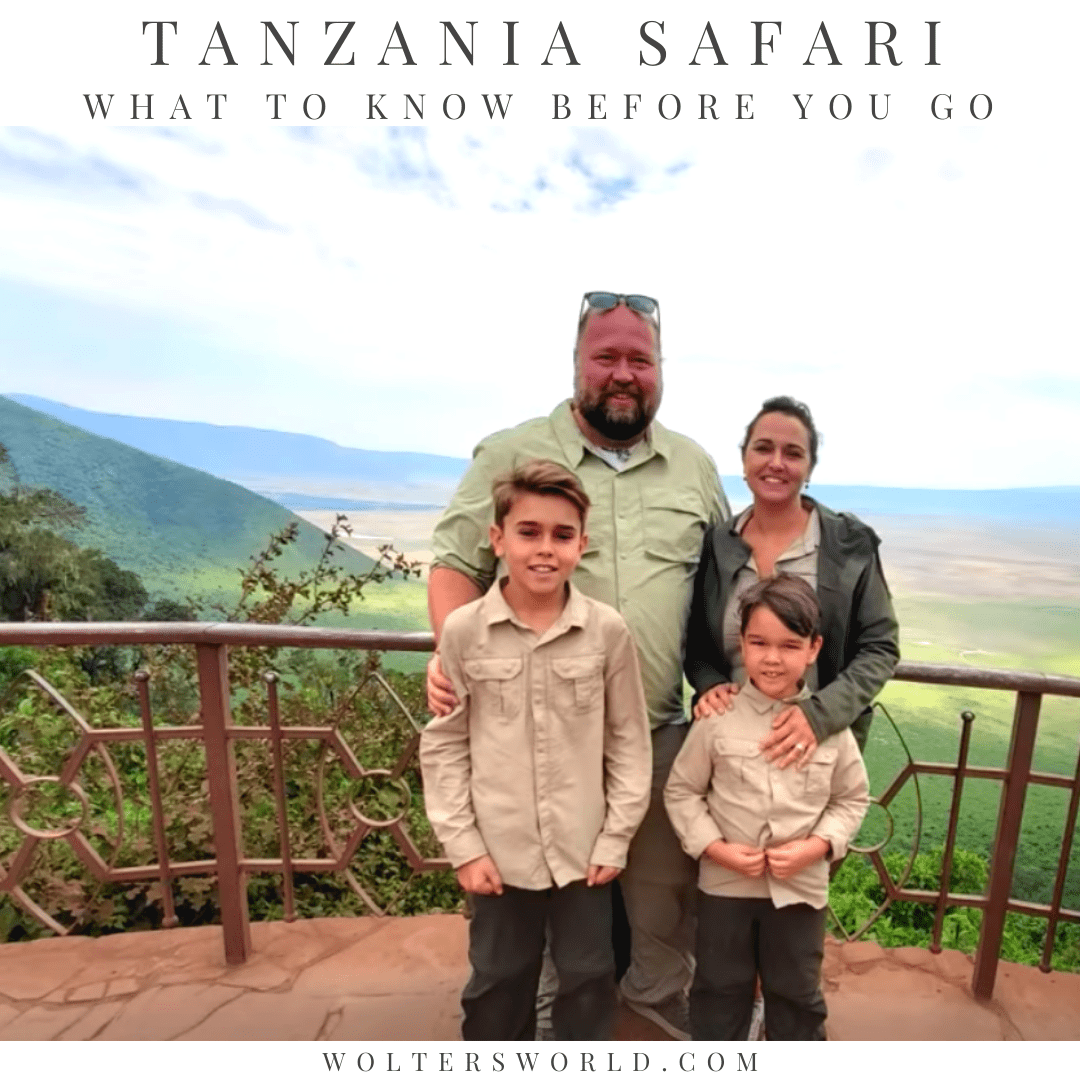Hey there, fellow travelers! Recently, our family embarked on a once-in-a-lifetime trip to Africa. We visited Tanzania for a Serengeti safari. We want to share our travel tips based on our own travel experiences, and let you in on the things you should know before your African family safari!
How Do I Get to the Serengeti?
Probably the first question many people have is how to get to your Tanzania safari. Typically, you will fly into Kilimanjaro International Airport in northern Tanzania. From there, you can charter a flight directly into the Serengeti. A more common and budget-friendly alternative is to start your safari in Kilimanjaro. The tour agency will pick you up from there before making your way to your Serengeti safari by Jeep.
Do I Need a Visa to Visit Tanzania?
For US citizens, you can obtain a visa upon arrival in Tanzania for $100. A similar policy applies to British and Canadian travelers. There are some countries that do not require a visa to visit Tanzania, so check ahead with your tour operator, as they will be well-versed in the visa process and any other paperwork you might need.
Tip: Make sure you have crisp, new bills to pay for your visa. They won’t accept wrinkled or well-worn cash.
Do I Need Vaccines to Visit Tanzania?
This is a medical question best discussed with your doctor or travel medical clinic. We were asked to show our vaccine records for yellow fever when we arrived in Tanzania. The CDC Travel Health website is a good place to start; print off their recommendations and bring them to your doctor to discuss. Note that not all doctors stock travel vaccines, so it’s a good idea to call ahead to find out prior to your appointment. There are special travel health clinics that specialize in travel vaccinations.

How Do I Choose a Tour Company?
If you’re planning to take an African safari, make sure you do all the research before booking. There are dozens and dozens of tour companies offering safaris. You don’t have to spend more than you can afford, and you don’t have to rough it if you don’t want to. There really is a safari option for everyone.
Many outfitters will actually tailor a trip specifically for you, so don’t be afraid to schedule a consultation with someone at the tour operator to discuss your parties’ goals and needs.
Once you’ve settled on a safari guide and company, they will send you a contract. Make sure you read through all of the fine print, as well as any reviews for the company you choose. Some of the more budget-friendly safari options may outsource you to another company on the ground or pool you with other travelers to fill up seats.
How Do I Choose the Best Safari?
When you research safari companies, most of them will take you on the same drives to see the same animals. So, the variations on price are based mostly on accommodation choices. Safari camps range from budget options to luxury options. Food is usually included in the price. You’ll have breakfast and dinner at the lodge, and usually, a picnic lunch is provided while you are out on safari. Even the picnic lunches can be quite good; it’s not just sandwiches and chips like you might expect! (Beverages are not included in the price; you will pay extra for soda, wine, and beer.)
- Luxury safari accommodations will include a tent that feels more like a hotel room. You’ll have king-sized beds, as well as a bathroom with a shower inside of your tent. Food and drink selections will be top-notch.
- Mid-range accommodations will include a comfortable tent, but you may have to walk to a shared bathroom and shower.
- Budget safaris will include a basic tent, perhaps with cots to sleep on and a shared bathroom. Food options will be good, but not as elaborate.
Regardless of which option you choose, make sure you listen to your guides. There will be instructions for using the bathroom at night. You CANNOT wander around alone at night; there are literally animals all around you.
How Will I Get Around in Tanzania?
Your safari Jeep will be your home away from home. They will pick you up every morning and drop you off every night, and you’ll spend the entire day out of the Jeep. You won’t need your own vehicle at all during the safari. Your driver/guide will take care of everything for you, including pointing out all of the animals along the way.
You do NOT get out of the Jeep at any point during the safari days. Most Jeeps have a viewing platform up top or in the back that allows you to safely observe the animals without exiting the Jeep.
The roads on safari are not paved and they can be very bumpy. They like to joke that it’s the “African massage.”

How Do I Go To The Bathroom?
At camp, your bathroom options will vary with the level of package you chose. From a basic outhouse to an en-suite luxury bathroom. When you enter the various safari parks, there’s usually a visitor’s center with restrooms. However, while you’re out on safari, there are no bathrooms. You will have to go right next to the Jeep as there is no wandering off to find a tree or bush to hide behind. It’s best to go before and after the safari if you can.
What Are “The Big Five” and How Do I See Them?
When planning a safari, you’ll hear a lot about the “big five.” Originally, these were the five most elusive animals to hunt back in the day. These five species are singled out because they are the hardest to find. But the truth is, there are way more than just five animals to see on safari. You’re going to see zebras, gazelles, giraffes, cheetahs, hyenas, and impalas, just to name a few others.
Watch our YouTube Video on the Big Five
Some of the “Big Five” are more common than others, and your guides will do their best to ensure you see them all. Here are our tips for seeing the Big Five on safari.
- Elephants are one of the Big Five that you are almost guaranteed to spot during your safari. For one, they are so big, you can’t miss them! Originally, elephants were hunted for the ivory in their tusks, which is why they are on the list.
- Cape Buffalo is another of the more common animals in the Big Five. You’re pretty likely to see them wandering around amongst the wildebeests and zebras. Cape Buffalo are on the list because they were hunted for their meat.
- When you think of African animals, you probably picture lions on the Serengeti. There are a lot of lions in the game parks, and you’ll probably see more lionesses than lions. If your timing is right, you might even see them with lion cubs.
- Leopards are another of the Big Five, but a more elusive animal than the others. Not only are they smaller in number, but they also hide very well. Consider yourself very lucky if you get to spot a leopard in Tanzania.
- The rarest of the Big Five is the Black Rhino. They are endangered, so there aren’t many to begin with. They are more common in the Ngorongoro Crater than in the Serengeti, so if you want to increase your odds of seeing a black rhino, you can plan a day trip there.
How Safe is a Safari in Tanzania?
Your tour guide’s number one goal is to keep you safe and to keep the wild animals safe. They will give you explicit instructions to keep you safe and if you follow them, you won’t have any issues.
That said, the biggest safety concerns for us were bugs and the sun. Safari clothes are designed specifically to protect you from both. The sun is very strong, so you want to cover up as much skin as you can, hence the long-sleeved shirts and pants. The light color helps not only to keep you cooler but also keeps the bugs away. Flying insects are particularly attracted to black and dark blue clothing. (Much safari-type clothing is also pre-treated with SPF and/or permethrin to keep bugs off.)
Another safety issue on safari is the water. Do not drink any water in Tanzania unless it is from a sealed bottle. We even recommend brushing your teeth with bottled water.
Can We Safari with Kids?
Yes! Our kids loved our safari experience. You do have to be able to follow explicit instructions in order to remain safe, so check with your tour operator to see if there is a minimum age. Kids over six or seven who can listen and follow instructions will do great! It’s very important they don’t run off on their own, though!
Taking a safari with kids is an amazing experience. Not only do they get to see cool animals, but they will get to experience the Maasai culture as well, and see how other people live. Grandma and grandpa also joined us, so the safari was a really great multi-generational vacation!

What Should I Pack for Safari?
Your tour operator will send a specific packing list prior to your departure. The best place to shop is at your local sporting goods store. Places like REI and Cabela’s have great options for all ages and sizes. Remember, you want to pack as light as possible! Everything needs to fit into the Jeep, and your safari operator will likely give you a weight limit to adhere to.
- Light-colored clothing is key! African safari clothes are khaki or olive for a reason. You want lightweight, long-sleeves, and long pants. These protect you from bugs and the sun.
- Comfortable shoes. Hiking boots are not needed, as you’ll be spending most of your time riding in a Jeep.
- Flip flops for the showers
- Bug Spray and/or bug bands
- Sunblock
- A bandanna or scarf for your face will be really helpful when the dust kicks up.
- Likewise, a bag to keep dust out of your camera is also very useful
- A “real” camera with a telephoto lens. Your cell phone camera won’t do the trip justice.
- Extra camera batteries! I went through three batteries per day. I had six in total so half of them could charge all day.
- Power banks are always a good backup to have along to re-charge your phone or camera.
- A checklist of animals you might expect to see. It’s fun to check them off as you see them, especially if you are on safari with kids.
- Motion sickness pills, if you are prone to getting car-sick. The roads are bumpy!
When Is The Best Time for a Safari?
March through May is the rainy season in Tanzania. June through October is the dry season when the majority of tourists come on safari. The great migrations happen in July and August, so that is a good time to safari.
How Does Tipping Work on Safari?
Tipping is a major source of income for those who work in the touristy industry in Tanzania. And there are no ATMs on the Serengeti, so you want to be prepared with plenty of cash for tipping. It’s OK to tip in US Dollars.
Typically, you will have a guide/driver, who can really make or break your trip. If they do a good job, you will want to tip them well. General guidelines are to tip $10 per person per day, with a minimum of $20 per Jeep. This is done at the end of your trip, not every day.
At the lodges, you’ll encounter a lot of staff who help make your staff more comfortable. There’s housekeeping, dining, and front desk staff. Rather than trying to figure out how much to tip each person, lodges actually have a tip box. At the end of your stay, you can put your tip in the tip box and it gets distributed amongst the staff. The average tip for lodging is $10/day. This would be for a mid-range lodge; tip more for luxury lodges and less for budget lodges.
For your airport transfer, you can plan to tip around $5-$10 for the driver. This is if your transfer is pre-arranged by your lodge. If you take a taxi in Tanzania, you’ll be negotiating your fare, so an additional tip is not expected.
While most safari packages include your meals, you may want to explore some local restaurants. In that case, you can round up your bill or tip about 10%. The locals do not tip, but as a tourist, it’s a nice thing to do and the prices are already pretty low so an additional 10% won’t break your travel budget.
Watch our Safari Tipping Video
What Else Do I Need to Know Before My Safari?
Just a few other things that are good to know before you arrive in Tanzania:
- Swahili is the most common language in Tanzania, but anyone you are traveling with on safari will speak English. (There are tour operators that specialize in every language, though!)
- There are no ATMs on the Serengeti. Bring plenty of cash! US Dollars are fine for tipping. (Some camps will take credit cards for your drink bill at the end of your trip.)
- Electrical outlets are the same as the UK, with three prongs. There won’t be a lot of outlets, so make sure you have an adapter with additional USB ports.
- You can get cellular service for phone calls, but don’t expect data service or WiFi to be widely available.
Grab Some Wolters World Travel Gear!
Our Serengeti safari with kids and parents was definitely a family trip to remember. We had so many special experiences, from getting to know the locals and their culture, to seeing so many cool animals in their natural habitat. If you feel your kids are old enough to handle the strict rules to remain safe, we absolutely recommend an African family safari.
Looking for more tips from our family trip to Africa? Check out some of these other blogs posts:
